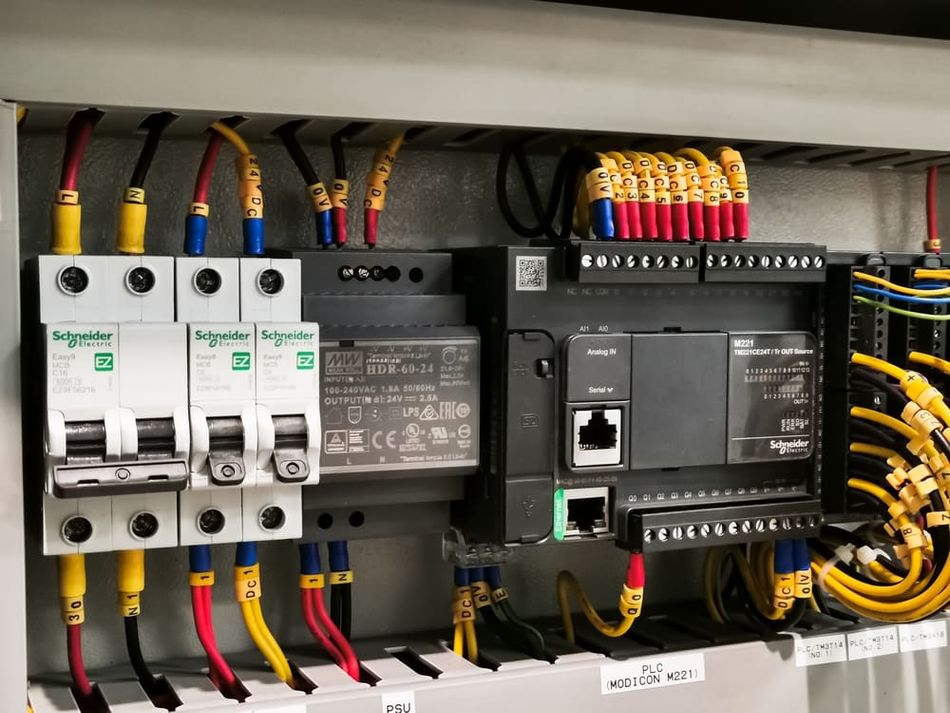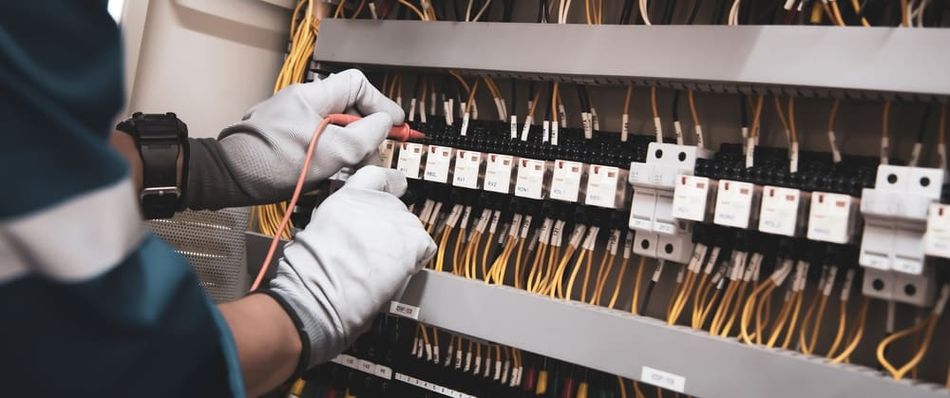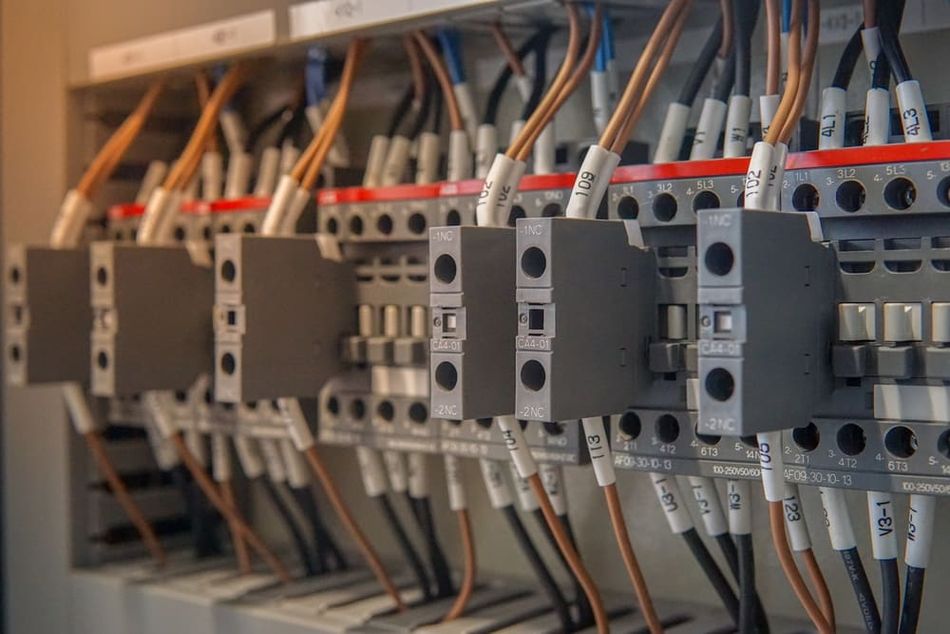Mastering Distributed Control Systems: A Comprehensive Guide to DCS Architecture, Components, and Applications
A distributed control system (DCS) is a network of interconnected controllers, computers and other automation devices used to monitor and control production processes. Get an in-depth look into the architecture, components, and applications of distributed control systems.
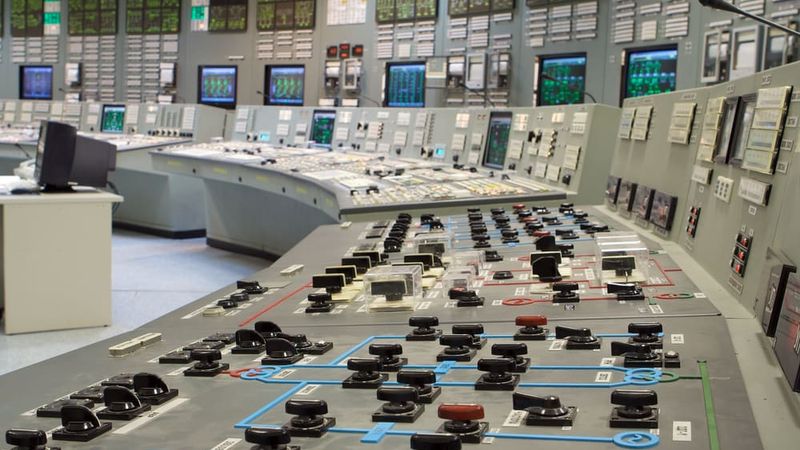
Control center of a neuclear power generation plant
No time now? Save for later.
We only use your email to send this link. Privacy Policy.
Introduction
The importance of DCS cannot be overstated as they have become an integral part of modern industrial operations. These complex systems have played a pivotal role in the development of industrial automation, providing unparalleled control and monitoring capabilities. Presently, Distributed control systems are widely installed in chemical plants, refineries, nuclear power plants, automobile industries, and water management systems.
In the following sections, we will delve into the evolution of distributed control systems, their benefits and limitations, and the various components that make up a DCS. Additionally, we will discuss the practical applications of DCS in different industries, as well as the implementation, maintenance, and troubleshooting aspects of these systems.
Understanding Distributed Control Systems
Before diving into the intricacies of Distributed Control Systems, it's essential to understand their origins and development. The history of Process control systems (PCS) is marked by numerous technological advancements, driven by the need for increased efficiency and safety in industrial processes.
As we discuss the evolution of control systems, we will discover how DCS emerged as a vital technology in modern industrial automation.
The Evolution of Control Systems
In the early days of industrialization, control systems were primarily mechanical, relying on manual intervention to manage various processes. However, as industries grew more complex, the need for more efficient and automated systems became apparent. During this time control systems transitioned from rudimentary manual systems to advanced digital technologies.
During the mid-20th century electronics and computing technologies developed exponentially. With these new technologies, industries could leverage automated systems that required minimal human intervention. It was a significant milestone in the development of control systems.
At this point, all the control systems were centralized, with a single controller responsible for managing multiple processes. While this was a significant improvement over manual control, centralized systems had limitations, such as a single point of failure and limited scalability.
As industries continued to expand and evolve, the need for more advanced and scalable control systems emerged. This led to the development of Distributed Control Systems (DCS). The first ever DCS was established by Honeywell in the year 1969. DCS offered a more flexible and efficient solution, with multiple controllers working simultaneously to automate process plants. By geographically distributing control elements, DCS could overcome the limitations of centralized systems, providing enhanced reliability, scalability, and flexibility.
In the 1970s the introduction of microprocessors increased the computing power of control systems and the advancements in communication technologies further propelled the evolution of DCS. These developments enabled DCS to integrate with other control systems, such as Programmable Logic Controllers (PLCs) and Supervisory Control and Data Acquisition (SCADA) systems. This creates a seamless ecosystem for industrial automation and control.
What is a Distributed Control System?
A Distributed Control System (DCS) is an advanced process control system used in industries for process automation. A DCS control system employs multiple controllers to manage various processes. DCS systems are characterized by their distributed architecture, where control functions are shared across numerous controllers. By leveraging DCS, industries can achieve improved efficiency, increased safety, and reduced operational costs. The key components of a DCS include controllers, Input/Output (I/O) modules, communication systems, and Human-Machine Interfaces (HMI).
Benefits and Limitations of Distributed Control Systems
Distributed Control Systems offer numerous advantages over traditional centralized control systems. Some of the key benefits of DCS include:
- Improved reliability: By distributing control functions across multiple controllers, DCS eliminates single points of failure. If one controller fails, other controllers can continue to operate, ensuring minimal disruption to the overall process.
- Scalability: DCS allows for easy expansion of control systems as industrial operations grow. Additional controllers and I/O modules can be added as needed without causing significant disruptions to the existing system.
- Flexibility: DCS enables seamless integration with other control systems, such as PLCs and SCADA systems. It provides a comprehensive solution for industrial automation and control.
- Reduced operational costs: By automating complex processes, DCS can help industries reduce labor costs, minimize human errors, and optimize resource utilization. This ultimately leads to lower operational expenses.
- Security: Cyber security and physical security of the system are ensured at the operator and engineer levels.
Despite these advantages, DCS implementation also comes with certain challenges and limitations:
- High initial investment: The implementation of a DCS can involve procuring and installing multiple controllers, I/O modules, communication networks, and HMIs. So, it can be capital-intensive initially.
- Complexity: Designing and configuring a DCS requires specialized knowledge and expertise. It necessitates hiring dedicated personnel or outsourcing the task to external consultants.
- Maintenance and support: Like any complex system, DCS requires regular maintenance and troubleshooting to ensure optimal performance. This may involve additional costs for staff training and support.
Control failure: Sometimes when a controller shutdowns or fails it affects more than one loop.
When comparing DCS with other control systems, it is crucial to consider the specific requirements and constraints of a given industrial operation. While DCS offers several advantages over centralized systems, it may not always be the most appropriate solution for every scenario.
Components and Architecture of Distributed Control Systems
A thorough understanding of Distributed Control Systems requires an in-depth examination of their instrumentation, components, and architecture. In this section, we will delve into the key elements that make up a DCS and explore how they work together to provide efficient control and monitoring of industrial processes.
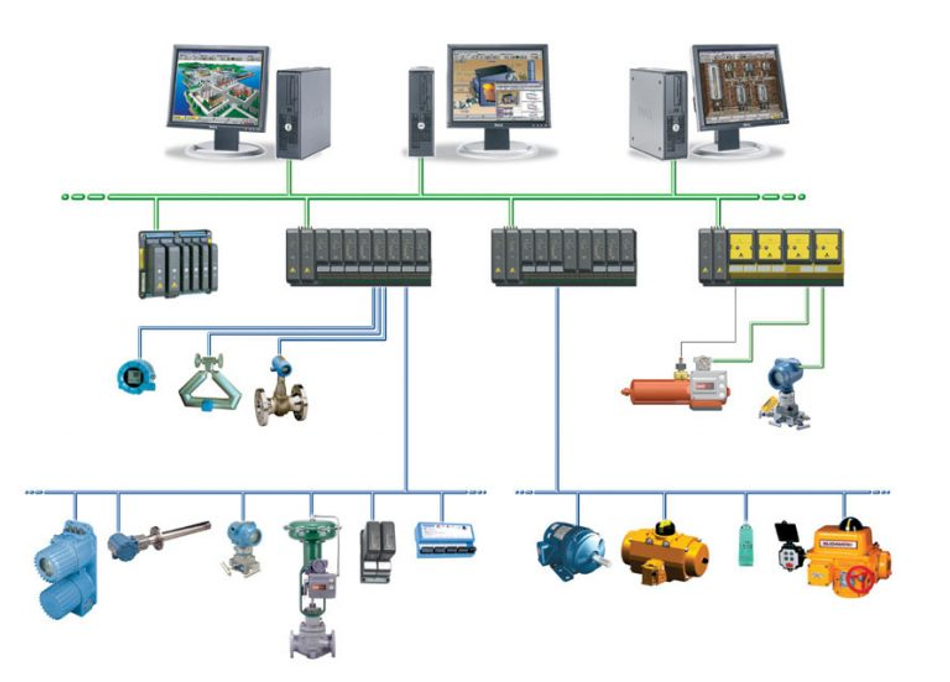
DCS Components
A Distributed Control System comprises several components, each serving a specific purpose within the system. These components work in tandem to enable seamless control and management of industrial processes. The primary components of a DCS include controllers, Input/Output (I/O) modules, communication networks, and Human-Machine Interfaces (HMI).
Controllers: Process Controllers or local control units are the heart of a DCS, responsible for executing control algorithms and managing process variables. These devices receive input data from sensors and field devices, process the data using control algorithms, and generate output signals to control actuators or other field devices. Controllers can be standalone devices or integrated into a larger system, depending on the specific requirements of an industrial operation.
Input/Output (I/O) modules: I/O modules serve as the interface between controllers and field devices, such as sensors, actuators, and other control equipment. Input modules receive data from field devices and convert it into a format that can be processed by the controllers. On the other hand, output modules convert controller-generated signals into a form that can be understood by field devices. I/O modules can be either analog or digital, depending on the type of signals they process.
Communication networks: Communication networks are the backbone of a DCS, connecting all system components and facilitating data transfer between them. These networks can be wired or wireless and may use various communication protocols, such as Ethernet, Fieldbus, or Industrial Wireless. Some of these are Modbus, Profibus, arc net, etc. Communication networks in a DCS must ensure reliable and real-time data transfer while minimizing latency and data loss.
Human-Machine Interfaces (HMI): HMIs or operating stations are essential for enabling operators to monitor and control industrial processes. They provide graphical representations of process data, allowing operators to gain real-time insights into the performance of various processes and make informed decisions. HMIs can be designed as standalone devices, such as touchscreens or computer terminals, or integrated into more extensive control systems. In addition to providing visualization and control functions, HMIs often incorporate alarm and event management, data logging, and reporting capabilities.
Engineering Station: This is the process control system that manages the whole DCS. It can be a computer or PC with specialized engineering software (e.g. abb freelance DCS engineering tool). By using these powerful tools users can perform various engineering functions like creating different I/O nodes, preparing documentation for each of these input/output points, configuring multiple distributed devices, and creating new loops.
In summary, the components of a DCS work together to provide an integrated solution for industrial control and automation. Each component plays a crucial role in ensuring efficient and reliable control of industrial processes, contributing to the overall performance and effectiveness of the system.
Characteristics of DCS Architecture
The architecture of a Distributed Control System plays a critical role in determining its functionality, reliability, and scalability. DCS architecture encompasses the organizational structure of the system components and their interconnections. It ensures seamless communication and coordination between the components.
In this section, we will explore the key aspects of DCS architecture and their implications for system performance.
Hierarchical Structure: DCS architecture is typically organized into a hierarchical structure, consisting of several layers.At the top of the hierarchy is the supervisory level, which includes control room computers, HMIs, and engineering workstations. They collect required data from processor nodes. This level also provides a comprehensive view of the entire process and enables operator intervention when necessary.
Below the supervisory level are the control layers, comprising controllers, I/O modules, and field devices. These layers execute control algorithms and manage process variables in real time, ensuring the desired process outcomes.
The hierarchical structure of DCS architecture allows for the efficient distribution of control tasks and promotes modularity. Hence, the structural hierarchy makes it easier to expand or modify the system as needed.
Redundancy: One of the key features of DCS architecture is redundancy, which ensures system reliability and fault tolerance. Redundancy can be achieved at various levels of the system, such as redundant controllers, I/O modules, communication networks, or power supplies. By incorporating redundant components, a DCS can continue to operate even in the event of a failure in one part of the system. For example, if a primary controller fails, a redundant controller can take over its functions, preventing disruptions to the overall process.
Combination of Communication Networks: The communication networks within a DCS architecture are critical for facilitating data transfer between system components, latency, and reliability. These networks may use a combination of different communication protocols, such as Ethernet, Fieldbus, or Industrial Wireless. In some cases, multiple communication networks may be employed to support different layers of the system hierarchy or to provide redundancy.
Integration with Other Control Systems: DCS architecture is often designed to facilitate seamless integration with other control systems, such as PLCs and SCADA systems. This integration enables a comprehensive solution for industrial automation and control, allowing different systems to work together to manage complex processes. Integration can be achieved through the use of common communication protocols, and data exchange mechanisms, or by incorporating specific interface modules within the DCS architecture.
Suggested Reading: What is SCADA?
In conclusion, the architecture of a Distributed Control System plays a vital role in determining its performance, reliability, and scalability. By understanding the key aspects of DCS architecture, you can design and implement control systems that meet the specific requirements of a wide range of industrial applications.
Implementing and Maintaining a Distributed Control System
The optimal performance, reliability, and longevity of a DCS depend on the implementation and maintenance of the system. This part of the article offers insight into planning, installation, commissioning, and maintenance practices that contribute to the success of these systems.
DCS Implementation: Planning and Design
The planning and design phase of DCS implementation involves several key aspects. These steps must be carefully considered and executed to ensure a smooth transition to the new system. It also helps to minimize potential issues during installation, commissioning, and operation.
Defining system requirements: The first step in planning and design is to define the system requirements. This includes identifying the specific needs and objectives of the control system. This process involves assessing the existing control system and processes and determining the desired level of automation and control. The next step involves evaluating any constraints, such as budget, space, or regulatory requirements.
Selecting the appropriate DCS: After establishing the system requirements, the next step is to select a suitable DCS that can fulfill those requirements. This involves evaluating various DCS vendors and platforms, taking into account factors such as system capabilities, scalability, flexibility, ease of integration, and cost. It is also essential to consider the long-term support and availability of spare parts and upgrades for the chosen DCS.
Developing the control strategy: Once the DCS platform has been selected, the control strategy must be developed. This includes defining the desired control loops, control algorithms, and setpoints. This also includes specifying the required hardware components, such as controllers, I/O modules, and communication devices. The control strategy should be designed to optimize process performance and efficiency while ensuring safety and regulatory compliance.
Designing the system architecture: With the control strategy defined, the next step is to design the overall system architecture, which includes the layout and organization of the DCS components. This involves determining the optimal placement of controllers, I/O modules, and communication devices, as well as designing the network topology and communication protocols. These measures ensure reliable and efficient data exchange between the various components.
Creating detailed design documentation: Lastly, it is essential to create detailed design documentation that outlines the specifications, configuration, and programming of the DCS components. This documentation serves as a blueprint for the installation, commissioning, and operation of the control system. Documentation is critical for ensuring consistency and accuracy throughout the implementation process.
DCS Integration with Existing Systems
Integrating a new Distributed Control System ensures seamless communication and data exchange between the DCS and other systems. A DCS system can be integrated with other systems such as legacy control systems, field devices, and higher-level enterprise systems. The integration process involves several crucial steps to ensure smooth operation and minimal disruption to ongoing processes.
Assessing compatibility: The first step in DCS integration is to assess the compatibility between the new DCS and the existing systems. This involves identifying the communication protocols and data formats used by the existing systems and determining whether the new DCS supports these protocols and formats. If necessary, protocol converters or gateways may be used to facilitate communication between incompatible systems.
Developing an integration plan: Once compatibility has been assessed, an integration plan is developed. This plan outlines the steps required to connect the new DCS with the existing systems. This plan includes the identification of critical data points and process parameters that need to be exchanged between the systems, as well as a timeline for the integration process. This helps minimize disruptions to ongoing operations.
Implementing data mapping and conversion: To facilitate seamless data exchange between the DCS and existing systems, data mapping and conversion may be required. This encompasses identifying the specific data points and process parameters that need to be exchanged, as well as the appropriate data formats and conversion methods. Following this procedure ensures accurate and consistent data representation across the systems.
Establishing communication links: After data mapping and conversion, the next step is to establish the communication links between the DCS and existing systems. This may involve configuring the necessary network connections, communication devices, and protocol settings to ensure reliable and efficient data exchange between the systems.
Testing and validation: Finally, the integrated system must be thoroughly tested and validated to ensure proper operation and data exchange. This involves verifying the accuracy and consistency of data exchanged between the systems, as well as monitoring the performance and stability of the integrated system during normal operation.
Training and Support for DCS Operators
Effective training and support for DCS operators are vital for the successful operation and maintenance of a Distributed Control System. A well-trained workforce can ensure optimal system performance, quick identification and resolution of issues, and improved safety and efficiency.
Developing a training program: The first step in providing training and support for DCS operators is to develop a comprehensive training program that covers both theoretical knowledge and hands-on skills. This program should be tailored to the specific needs and requirements of the organization and should include topics such as system architecture, control strategies, hardware components, software configuration, and troubleshooting techniques.
Selecting appropriate training methods: There are various training methods available, such as classroom training, online courses, and hands-on workshops. The most effective training programs typically combine multiple methods to provide a well-rounded learning experience for the operators. The choice of training methods should be based on factors such as the complexity of the DCS, the experience level of the operators, and the available resources and infrastructure.
Ongoing training and support: In addition to the initial training program, ongoing training, and support should be provided to DCS operators to ensure their skills and knowledge remain up-to-date. This may include periodic refresher courses, access to online resources, and support from experienced personnel or external consultants.
Performance evaluation and feedback: Regular performance evaluations should be conducted to assess the effectiveness of the training program and to identify areas for improvement. Feedback from the operators should also be collected to ensure their needs and concerns are being addressed adequately.
Maintenance and Troubleshooting of Distributed Control Systems
Regular maintenance and effective troubleshooting: These are mandatory for the efficiency, and safety of a Distributed Control System. Here are a few ways that will help you keep a DCS system running smoothly.
Proactive maintenance strategies: Implementing proactive maintenance strategies, includes preventive and predictive maintenance. Preventive maintenance involves performing regular inspections, cleaning, and component replacements based on a predefined schedule. Predictive maintenance, on the other hand, involves monitoring the condition of the system components and using advanced analytics to predict and prevent potential failures before they occur.
Establishing maintenance routines: Developing and implementing well-defined maintenance routines means that all critical DCS components receive the necessary attention at appropriate intervals. These routines should include tasks such as checking hardware connections, inspecting wiring for damage, verifying the accuracy of sensors, and updating software and firmware as needed.
Effective troubleshooting techniques: When issues do arise, you should have effective troubleshooting techniques in place to quickly identify and resolve the problem. Troubleshooting a DCS typically involves a systematic approach, starting with the identification of symptoms, followed by the isolation of the root cause and the implementation of corrective actions. Common troubleshooting techniques include reviewing system logs, performing diagnostic tests, and consulting documentation or expert support when needed.
Knowledge management and documentation: Maintaining accurate and up-to-date documentation for the DCS is essential for effective troubleshooting and maintenance. This documentation should include system architecture diagrams, component specifications, configuration settings, troubleshooting guides, and maintenance updates. Knowledge management systems can be utilized to store and organize this information. These systems make it easily accessible to maintenance personnel and operators when needed.
Continuous improvement: Lastly, focusing on continuous improvement is vital for the long-term success of DCS maintenance and troubleshooting efforts. Regularly reviewing maintenance and troubleshooting practices, as well as analyzing system performance data can help identify areas for improvement and drive ongoing refinements to processes and procedures.
Proper maintenance and troubleshooting practices minimize downtime, reduce operational costs, and extend the lifespan of the DCS components. It ultimately leads to improved operational performance and reduced total cost of ownership.
Applications of Distributed Control Systems
Distributed Control Systems are widely used across a diverse range of industries and have several applications. They provide a robust and flexible solution for the control and automation of complex processes.
In this section, we will examine a few industries where distribution control application plays a key role in operation optimization.
Process Industries
DCSs have proven to be particularly effective in managing the complex requirements of process industries. These industries involve continuous or batch production processes that require precise control and monitoring. As well as high efficiency, reliability, and safety.
Some of the most prominent process industries where DCSs are widely used include:
Oil and Gas: In the oil and gas industry, DCSs are employed to manage a wide range of processes, such as exploration, production, refining, and distribution. The systems control and monitor various operations, including drilling, pumping, separating, and processing crude oil and natural gas. DCSs are crucial for maintaining the safety and efficiency of these processes, as they can help prevent equipment malfunctions, leaks, and other hazards.
Chemical and Petrochemical: The chemical and petrochemical industries rely on DCSs for controlling and monitoring complex chemical reactions and processes, such as distillation, crystallization, and polymerization. These systems ensure the consistent production of high-quality chemicals and petrochemical products while minimizing waste, energy consumption, and environmental impact.
Pharmaceutical: In the pharmaceutical industry, DCSs are employed to control and monitor production processes, such as mixing, granulation, drying, and tablet compression. The systems maintain strict process control and provide real-time monitoring of critical process parameters, such as temperature, pressure, and flow rates.
Food and Beverage: The food and beverage industry uses DCSs to manage a wide range of production processes, such as cooking, cooling, pasteurization, and packaging. These systems maintain strict control over process variables, ensuring consistent product quality and compliance with food safety regulations.
Distributed Control Systems are invaluable in process industries. By implementing DCSs, process industries can achieve improved efficiency, reliability, and safety, ultimately contributing to better product quality and reduced operational costs.
Power Generation and Distribution
Distributed Control Systems manage the intricate processes involved in generating, transmitting, and distributing electricity to consumers. The use of DCSs in this industry is essential for ensuring the stable and efficient operation of power systems, as well as maintaining a high level of safety and functionality.
In power generation plants, DCSs are responsible for controlling processes like fuel handling, combustion, and turbine control. These systems help optimize power generation efficiency by continuously monitoring and adjusting process variables, such as temperature, pressure, and flow rates. This allows for the fine-tuning of operating conditions to minimize fuel consumption, reduce emissions, and increase the overall performance of power plants.
In addition to power generation, DCSs are also employed in the management of electrical transmission and distribution systems. These systems control and monitor the flow of electricity from power plants to substations and, eventually, to end-users. DCSs are crucial in ensuring the stability of electrical grids, as they help maintain the balance between supply and demand by adjusting the output of power plants and managing the operation of transmission lines, transformers, and other grid components.
By using DCSs in power generation and distribution, utilities can improve the efficiency of their operations while maintaining compliance with regulatory requirements. This ultimately results in reduced operational costs, enhanced system performance, and improved customer satisfaction.
Water and Wastewater Treatment
In the water and wastewater treatment industry, Distributed Control Systems help to manage and control the treatment, distribution, and disposal of water resources. The use of DCSs guarantees the efficient and safe operation of treatment facilities, as well as maintaining compliance with environmental regulations.
In water treatment plants, DCSs are responsible for controlling and monitoring processes, such as coagulation, flocculation, sedimentation, filtration, and disinfection. The goal of using these systems is the consistent production of high-quality potable water. It is achieved by maintaining strict control over process variables, such as chemical dosages, pH levels, and turbidity.
Similarly, in wastewater treatment plants, DCSs are employed to control and monitor primary settling, biological treatment, secondary settling, and disinfection. They continuously monitor and adjust process variables, such as dissolved oxygen, pH levels, and sludge concentrations. This enables the plants to minimize energy consumption, reduce the generation of waste products, and ensure compliance with effluent discharge regulations.
Moreover, In the management of water distribution networks and sewage collection systems DCSs control and monitor the whole process. It includes monitoring the operation of pumps and, valves, to other equipment used to transport water and wastewater through pipelines and canals. DCSs help maintain the stability of these systems by adjusting the operation of equipment based on the demand for water resources, as well as monitoring the quality and pressure of water in the network.
Conclusion
Distributed Control Systems have revolutionized the way industries manage and control their processes, offering significant benefits such as increased efficiency, improved reliability, and enhanced flexibility. Understanding the evolution, components, architecture, and applications of DCSs is crucial for those looking to implement or maintain such systems. By carefully planning and designing the implementation, integrating with existing systems, and providing proper training and support for operators, organizations can ensure the success of their DCS projects.
Frequently Asked Questions (FAQs)
1. What is the primary difference between a Distributed Control System (DCS) a Programmable Logic Controller (PLC) and Supervisory Control and Data Acquisition System (SCADA)?
While PLCs are ideal for discrete control tasks with high-speed requirements, DCS is designed for continuous process control in large-scale industrial operations. SCADA systems, on the other hand, primarily focus on data acquisition and monitoring rather than control functions. In practice, DCS, PLCs, and SCADA systems often work together to provide a comprehensive solution for industrial automation and control.
Suggested Reading: What is PLC?
2. How do DCSs contribute to increased operational efficiency?
DCSs help increase operational efficiency by providing centralized monitoring and control of distributed processes, enabling operators to make real-time adjustments to optimize performance. In addition, DCSs use advanced control algorithms and data analytics to optimize processes, reduce energy consumption, and minimize waste.
3. What industries commonly use Distributed Control Systems?
Distributed Control Systems are widely used in various industries, including process industries (chemical, pharmaceutical, oil and gas, and food and beverage), power generation and distribution, water and wastewater treatment, and manufacturing.
4. How do organizations ensure the reliability and safety of their DCSs?
Organizations can ensure the reliability and safety of their DCSs by implementing proactive maintenance strategies, establishing well-defined maintenance routines, employing effective troubleshooting techniques, maintaining up-to-date documentation, and focusing on continuous improvement.
5. Can DCSs be integrated with existing control systems?
Yes, DCSs can be integrated with existing control systems, such as PLCs ( Programmable Logic Controls) or Supervisory Control and Data Acquisition (SCADA) systems. This integration can be achieved through the use of communication protocols, gateways, or middleware solutions that facilitate data exchange and interoperability between the systems.
References:
[1]Hulewicz, A., Krawiecki, Z., & Dziarski, K. (2019). Distributed control system DCS using a PLC controller. In ITM Web of Conferences (Vol. 28, p. 01041). EDP Sciences.
https://www.itm-conferences.org/articles/itmconf/pdf/2019/05/itmconf_zkwe2019_01041.pdf
[2]Balador, A., Ericsson, N., & Bakhshi, Z. (2017, September). Communication middleware technologies for industrial distributed control systems: A literature review. In 2017 22nd IEEE International Conference on Emerging Technologies and Factory Automation (ETFA) (pp. 1-6). IEEE.
http://www.es.mdh.se/pdf_publications/4905.pdf
[3] Trentesaux, D. (2009). Distributed control of production systems. Engineering Applications of Artificial Intelligence, 22(7), 971-978.
https://www.sciencedirect.com/science/article/abs/pii/S0952197609000797
in this article
1. Introduction2. Understanding Distributed Control Systems3. Components and Architecture of Distributed Control Systems4. Applications of Distributed Control SystemsNo time now? Save for later.
We only use your email to send this link. Privacy Policy.

